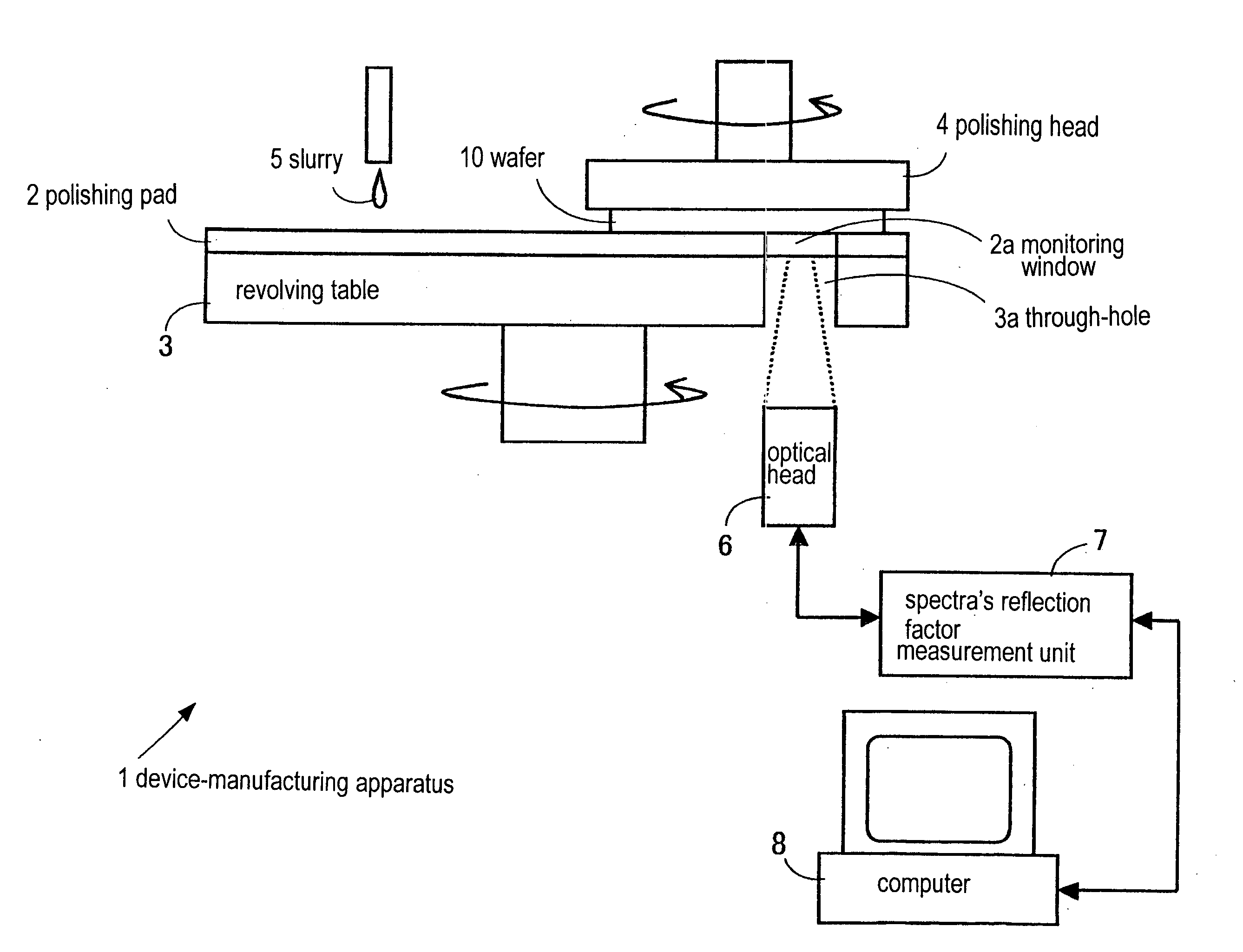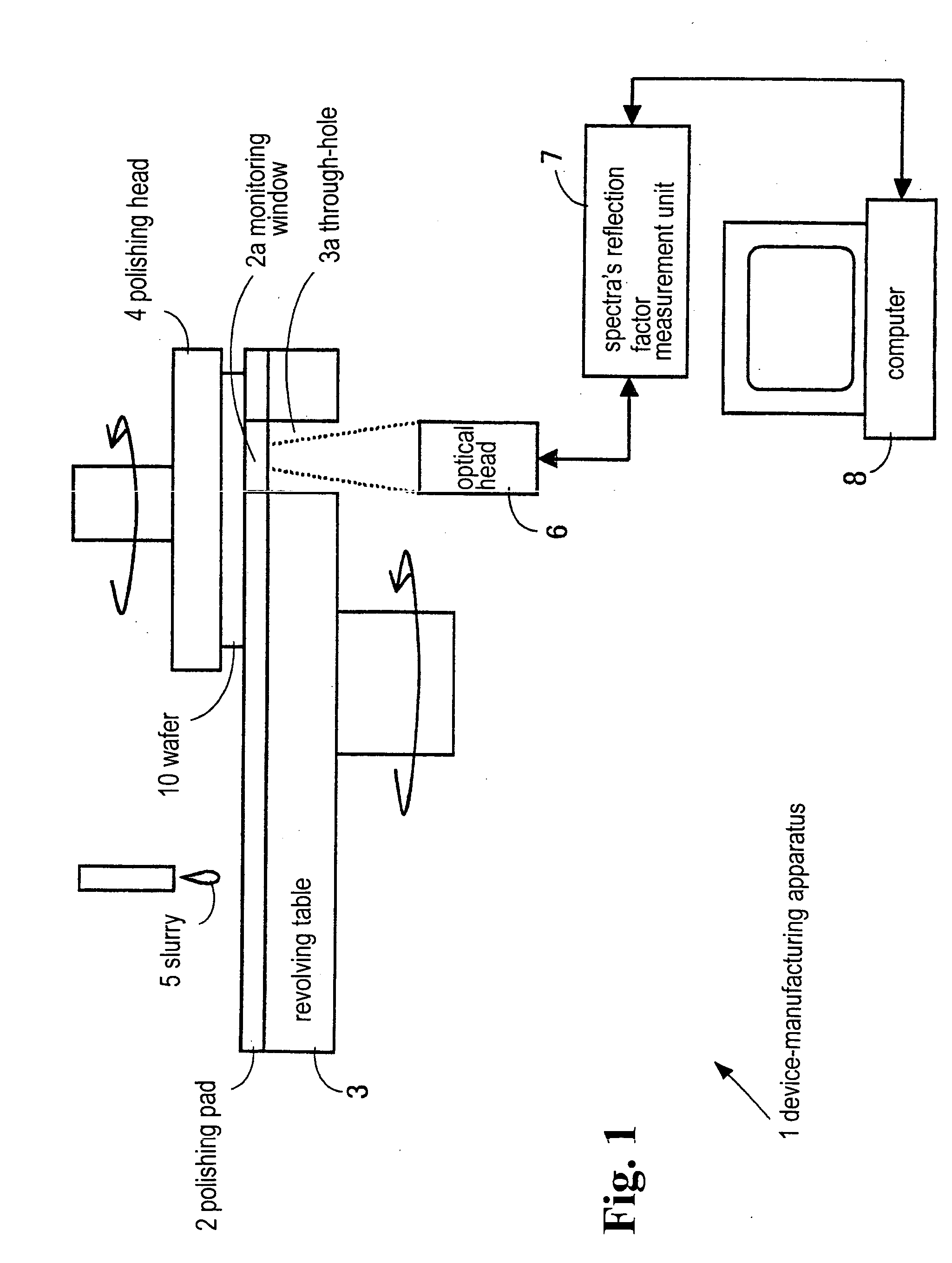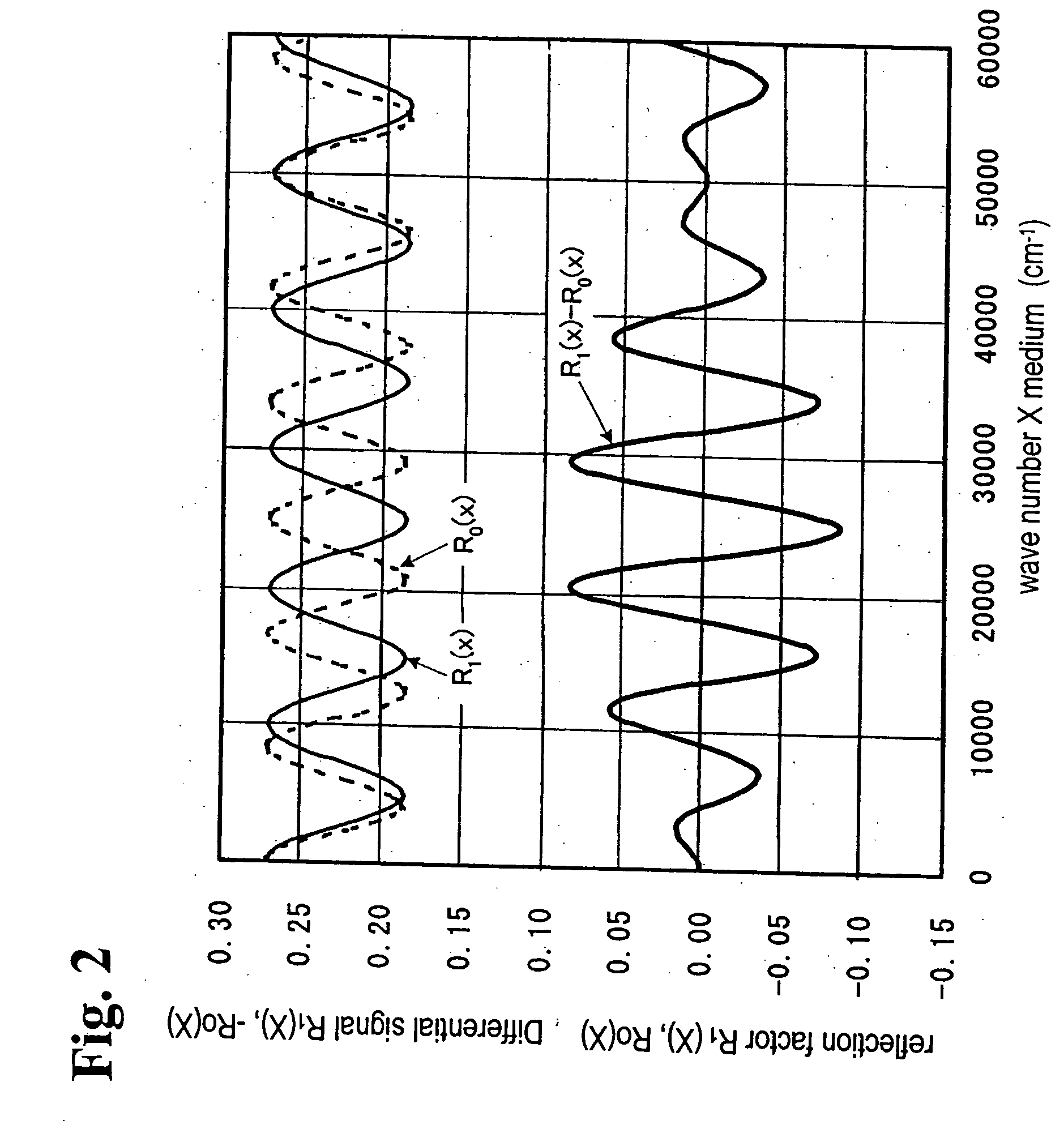Method of evaluating film thickness, method of detecting polishing terminal, and device-manufacturing apparatus
a technology of polishing terminal and thickness, which is applied in the direction of manufacturing tools, lapping machines, instruments, etc., can solve the problems of lowering beam efficiency, difficult to precisely analyze the color of rgb, and difficult to perform optical adjustment, etc., to achieve high precision, and accurate evaluation of film thickness
- Summary
- Abstract
- Description
- Claims
- Application Information
AI Technical Summary
Benefits of technology
Problems solved by technology
Method used
Image
Examples
Embodiment Construction
[0026] Hereunder, embodiments of the present invention will be explained with reference to the accompanying drawings. In the embodiments, as an example, an insulating film formed on a wafer is polished during a manufacturing process of a semiconductor device. An optical model for evaluating a film thickness during a polishing process will be explained first.
[0027] A thickness of a thin film at a polishing time t is defined as d; a reflection factor of light comprising the wave number x in a medium at the polishing time t is defined as R1(x); a thickness of the thin film at a polishing time t−Δt with a relatively short period of time Δt from the polishing time t is defined as d+Δd; and a reflection factor of light comprising the wave number x in the medium at the polishing time t−Δt is defined as R0(x). The reflection factors R1(x) and R0(x) are individually expressed by optical models (1) and (2) as shown below:
R1(x)=A·cos(4πdx)+B (1)
R0(x)=A·cos{4π(d+Δd)x}+B (2)
where A and B ...
PUM
 Login to View More
Login to View More Abstract
Description
Claims
Application Information
 Login to View More
Login to View More - R&D
- Intellectual Property
- Life Sciences
- Materials
- Tech Scout
- Unparalleled Data Quality
- Higher Quality Content
- 60% Fewer Hallucinations
Browse by: Latest US Patents, China's latest patents, Technical Efficacy Thesaurus, Application Domain, Technology Topic, Popular Technical Reports.
© 2025 PatSnap. All rights reserved.Legal|Privacy policy|Modern Slavery Act Transparency Statement|Sitemap|About US| Contact US: help@patsnap.com



